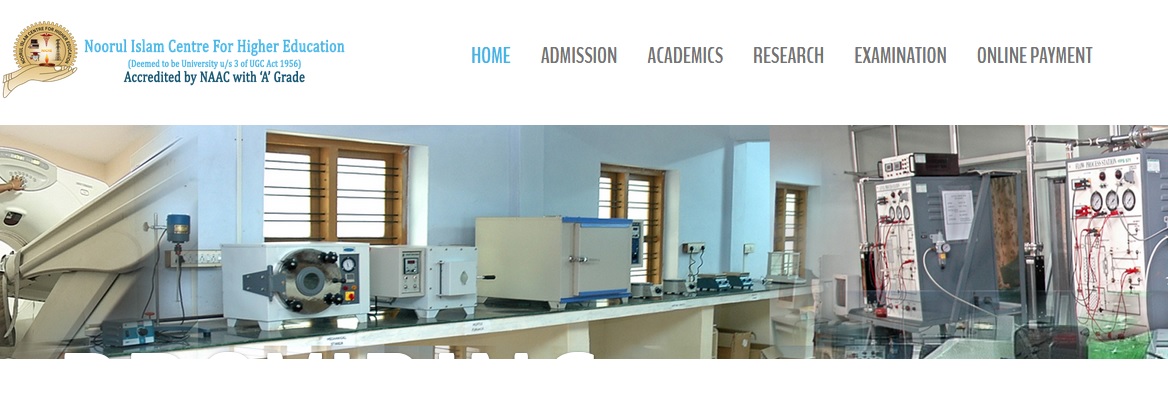XCS593 Networks Security M.Sc Question Bank : niceindia.com
Name of the College : Noorul Islam College of Engineering
University : Anna University
Degree : M.Sc
Department : Software Engineering
Subject Code/Name : XCS 593 – Networks Security
Year : 5th
Semester : 9th
Document Type : Question Bank
Website : niceindia.com
Download Model/Sample Question Paper : https://www.pdfquestion.in/uploads/niceindia.com/3136-XCS593_NetworkSecurity.pdf
NICE Networks Security Question Paper
1. What are the various layers of an OSI reference model? :
Application, Presentation, Session, transport, Network, Data Link, Physical layers.
2. What are important layer 4 protocols? :
TCP and UDP
Related : Noorul Islam College of Engineering XCS471 Principles of Management M.Sc Question Bank : www.pdfquestion.in/3138.html
3. What is a passive attack? :
A passive attack is one in which the intruder eavesdrops but does not modify the message stream in any way.
4. What is an active attack? :
An active attack is the one in which the intruder may transmit messages, replay old messages, modify messages in transit.

5. Difference between authentication and authorization? :
Authentication – who you are.
Authorization – what you are allowed to do.
6. Define a virus.
A virus is a set of instructions when executed inserts copies of itself into other programs.
7. What is a worm? :
It is a program that replicates itself by installing copies of itself on other machines across a network.
8. What is zombie? :
They are malicious instructions installed on a system that can be triggered to carry
out an attack with less traceability.
9. What is a trapdoor? :
It is an undocumented entry point intentionally written into a program, for debugging purposes.
10. What are digital pest? :
All kinds of malicious software,’ are digital pests.
11. What is a polymorphic virus? :
To evade detection of viruses, polymorphic viruses are devised.
12. What are non-discretionary access controls? :
They enforce a policy where users might be allowed to use information themselves but not to make a copy of it.
13. What are the components of security label? :
a. Security level.
b. Categories
14. What is a security level? :
It is an integer which consists of unclassified, confidential, secret and topsecret.
15. What are categories? :
Categories are known as compartments which describe kinds of information.
16. Define discretionary? :
Someone who owns a resource can make a decision as who is allowed to use it.
17. What is a covert channel? :
It is a method for a Trojan horse to circumvent the automatic confinement of information within a security perimeter.
18. Give an example of covert channel? :
a. Timing channel.
b. Storage channel
19. What are the services provided by cryptography? :
a. Integrity checking
b. Authentication
20. What is a ciphertext? :
The mangled information is the cipher text.
21. What is encryption? :
The process of producing ciphertext from plaintext is known as encryption.
22. What is decryption? :
The reverse process ids called decryption
23. What are the basic attacks of breaking an encryption scheme? :
Ciphertextonly, known plaintext, chosen plaintext.
24. What are the types of cryptographic functions? :
a. Secret key cryptography
b. Public key
c. Hash functions
25. What is permutation? :
A permutation specifies k input bits and the output position to which it goes.
26. What are the operations of IDEA? :
a. Bitwise exclusive
b. Slightly modified add
c. Slightly modified multiply
27. How many rounds are present in IDEA? :
17 rounds
28. What are the operations of AES? :
a. Exclusive or
b. Octet for octet substitution
c. Rearrangement of octets rotating a row or column by number of cells
d. Mixcolumn.
29. How is a mixcolumn implemented? :
It is a single table containing 256 4 octet columns. Each of the 4 octets is used as an index to retrieve column from the table.
30. What are the various modes of operation? :
a. Electronic code book
b. Cipher block chaining
c. Cipher feedback mode
d. Counter mode
e. Output feedback mode